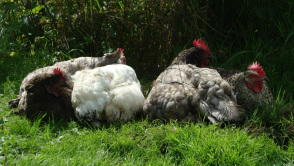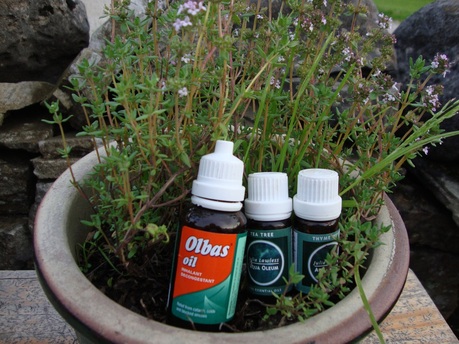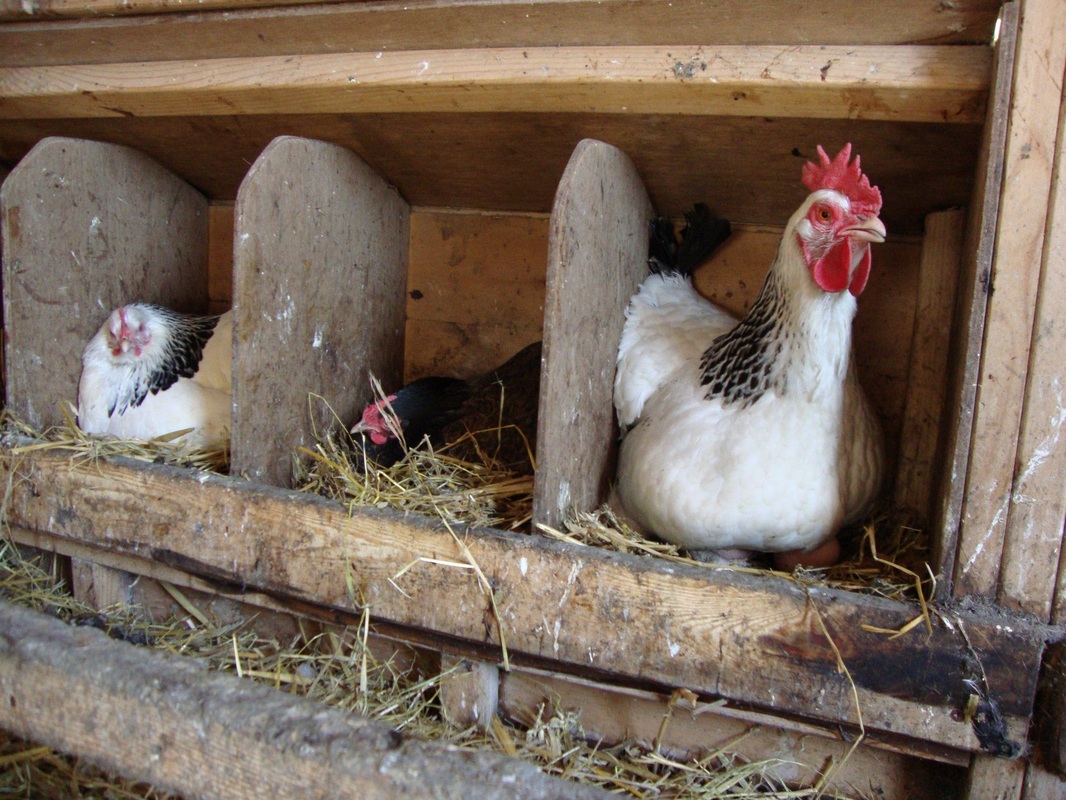 ...a few of my chickens, sun, bathing...looking healthy with no apparent evidence of red mite infestation
...a few of my chickens, sun, bathing...looking healthy with no apparent evidence of red mite infestation I'm not going to use this space for writing in detail about red mite, as there are are some very thorough works already out there about causes, signs, symptoms, life cycle of the mite etc., (which all need to be understood to be able to think about effective and appropriate solutions). I like this PDF from www.practicalpoultryvet.co.uk which gives good, clear information.
In the end I came up with a variety of approaches to the problem... as nearly all of my designing, using permaculture ethics and principles seems to arrive at! The 'Practical Poultry' article above also suggests a diversity of approaches is likely to be more effective than just trying one.
So the first thing I have considered is the general health and happiness of my chicken's and how enhancing this will make them more resilient to parasites and disease in general. This is an approach permaculture has taught me about all aspects of my life and work...the more I create environments where we (myself, my loved ones, animals, plants etc) are cared for, protected and nourished in all ways, the more we can cope with adverse events (illness, stress, parasites, infection, predators etc). My chickens are totally free range over as much land as they want...they have access to meadow and woodland where no chemicals are used and there is an abundance of herbage, flowers, grasses and insects for them to choose and eat. This diet is supplemented with a commercial non GM poultry feed plus garlic (which helps to protect against internal parasites) which the chickens rely on mainly in the winter months when there is snow on the ground and the growth of most plants ceases. Their housing is near to the farmhouse which means that people and dogs are constantly around which keeps potential fox problems (and the resulting stress to the flock ) at bay. My understanding and experience is that parasites such as red mite are always going to be around and my general aim is to enable my flock to be able to deal with it themselves to a certain level
 ...some of the solution
...some of the solution From the above, I came up with the following treatment for my chickens;
If there are signs of red mite infestation (see the 'Practical Poultry' article above).......
* Thyme oil 10 drops
* Tea tee oil 10 drops
* Citronella oil 10 drops
* lavender oil 10 drops
* Olbus oil 5 drops
........mix all together in a large spray container, ideally with a little vodka ( or other spirit) to help mix disperse the oils..The only evidence behind using Olbus oil is that Jackie Bridgen a farmer who I very much admire and respect told me she used it for all kinds of poultry care (and other animal care...its very much at the core of my 'medicines' cupboard now), with good effect....so i add it in for good measure. I spray the WHOLE of the inside of the chicken house thoroughly especially any joins/cracks/edges/perches where the red mite are likely to be lurking. i do this every 5-6 days (the life cycle of the mite) for a couple of months then when all signs of the mite have gone I apply the same solution in the same way every couple of weeks or so for 'maintenance'.
In addition to this, I apply Barrier Red Mite Powder to the actual chickens at the same frequency as the chicken house treatment as above. The Barrier powder has a similar mix of oils as the spray I have devised above, but in a maize powder base, which means it stays on the bird longer.
A recent farming press article here is suggesting a way forward also using some of the plant based solutions as appose to the more damaging insecticides currently used in the treatment of red mite in mainstream commercial poultry farming. This is really encouraging news.
Further plans for the care of my chickens, both generally but especially relating to red mite, is to offer fresh (and dried?) thyme in their diet, especially during the summer months (when the thyme is growing and red mite is more problematic). I have no idea at present whether the chickens will eat the thyme on a regular basis (they seem to like the small amounts I have given them so far), or if it will make any difference to their well being...as mentioned before they already eat garlic on a daily basis, the oil of which is listed as beneficial to repelling the mite in the Newcastle University study. I am also going to place a 'dust bath' (big plastic tub) cantaining dry sand and some of the Barrier powder, inside the chicken house, so that the chickens can chose to coat their feathers she they need to in addition to when I apply the powder, what ever the weather. (Chickens naturally seek out dust baths as a way of controlling external parasites)
Well this has been a long post!..sorry!!...if you got to the end of it, then well done... and I hope some of it has made sense. I'll provide an update about the 'Further Plans' in a couple of months.....

 RSS Feed
RSS Feed